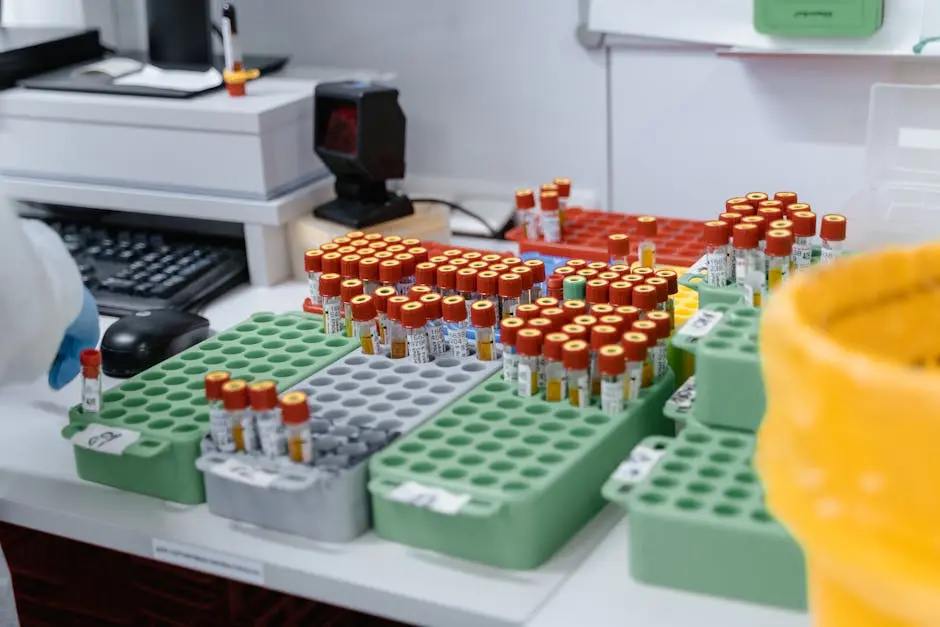The Role of Sample Cups in Accurate Medical Testing
In the world of medical testing, precision is paramount. One often overlooked element that significantly contributes to the accuracy of test results is the sample cup. These small containers play a crucial role in collecting, storing, and transporting samples for analysis. In this blog, we will explore the various aspects of sample cups and their importance in medical testing, ensuring that you understand why they are more than just simple containers.

What are Sample Cups and Their Uses?
Sample cups are specialized containers designed to collect various types of biological samples, including urine, blood, and saliva. Understanding their uses helps illuminate their importance in the medical field.
These containers are crafted to ensure that the samples remain uncontaminated until they reach the laboratory. For instance, when a patient provides a urine sample, the sample cup's design prevents any interference from external factors, which could skew the results.
In addition to their role in collection, sample cups often come equipped with features such as secure lids and labels that identify the type of test being conducted. This ease of identification is crucial for medical professionals who are processing multiple samples simultaneously.
Furthermore, sample cups can also vary in size and material, depending on the specific requirements of the tests. While some tests may require smaller volumes, others, like blood collections, may demand larger capacities.
The Importance of Proper Sample Collection
Proper collection of samples is critical for accurate testing. We'll discuss best practices for using sample cups and how mishandling can lead to erroneous results. Imagine a scenario where a patient provides a sample but the cup is not sealed correctly; this can introduce air or contaminants that compromise the integrity of the sample.
To avoid such pitfalls, it’s essential for both patients and healthcare providers to understand the correct protocols. This includes educating patients on how to fill the cup without introducing contaminants, a seemingly simple task that can significantly impact test outcomes.
Moreover, while the sample cup itself plays a vital role, the scenario surrounding its use can influence results too. Factors such as the timing of collection and the method of handling before submission to the lab are all crucial. Emphasizing these factors in training materials for medical staff can lead to a more streamlined process overall.
Choosing the Right Sample Cup for Different Tests
Different tests require different types of sample cups. This section will explain how to select the appropriate cups based on the type of sample and test being conducted. For example, blood tests often utilize vacuum-sealed tubes designed to prevent clotting, while urine tests may require open cups with specific volume markings.
Selecting the right cup not only ensures that the sample remains stable but also optimizes the test's accuracy. If a cup is not suited for a particular sample type, it can lead to situations where precious samples are wasted or results are rendered unreliable.
Furthermore, the evolution of medical technology has seen the introduction of specialized cups designed to meet specific testing requirements. These innovations include built-in preservatives or features that allow for easier mixing of the sample with reagents, highlighting the importance of staying updated on the latest advancements.
Ensuring Sample Integrity During Transportation
Transporting samples from the collection point to the testing lab is critical. We'll share tips on how to ensure that sample integrity is maintained during this process. Think of sample transportation as a delicate dance where every step counts; any misstep can lead to altered results.
One key aspect is temperature control during transit. Certain biological samples, like blood, need to be kept at specific temperatures to prevent degradation. This necessitates the use of insulated transport boxes when samples must travel long distances.
Moreover, clear labeling is vital. Each sample cup should be clearly marked with vital information like the patient ID, the date of collection, and any relevant test instructions. This simple step helps maintain organization and ensures samples are correctly matched to their respective tests in the lab.
Innovations in Sample Cup Design and Technology
Advancements in technology have led to the creation of innovative sample cups designed to improve accuracy and convenience. We'll highlight some of these innovations. For example, some modern sample cups now come with integrated safety features that minimize the risk of spills during transportation.
Additionally, the development of biodegradable sample cups is a promising step toward sustainability in medical testing. These eco-friendly products offer the same reliability as traditional cups while also addressing environmental concerns.
Furthermore, digital technologies are making their way into sample cup design. Imagine sample cups that can send data back to the lab regarding conditions during transportation or even the volume of the sample collected. Such innovations mark an exciting future for medical testing and highlight the important intersection between healthcare and technology.
Wrapping Up the Importance of Sample Cups
In conclusion, sample cups are fundamental to the accuracy and reliability of medical testing. By ensuring proper collection, storage, and transportation of samples, these small but mighty tools contribute significantly to accurate diagnoses and effective treatments. Understanding the role of sample cups helps us appreciate the intricacies of medical testing and the importance of every step in the process.
Recent Posts
-
We Moved To A New Location!
Medical Distribution Group, Inc. and the Identify Family of Brands have moved to serve YOU better!&n …3rd Mar 2025 -
8 Common Myths About Nitrile Gloves Debunked
Nitrile gloves have become a popular choice for many industries, but with their rise in popularity c …30th Jan 2025 -
8 Common Challenges in Laboratory Transport and How to Overcome Them
Transporting materials in a laboratory setting can come with a unique set of challenges. Whether it’ …16th Jan 2025
